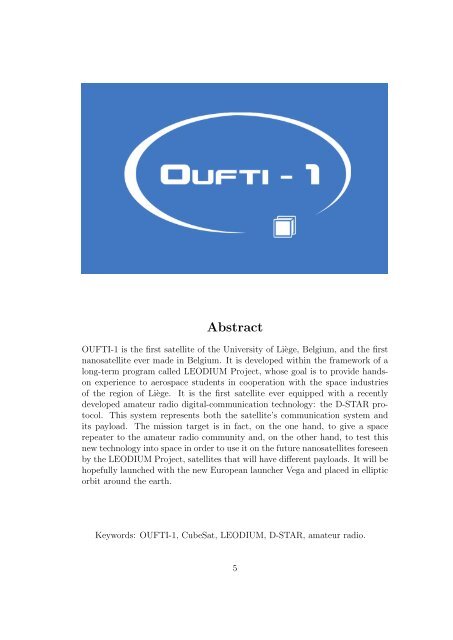Mission Design for the CubeSat OUFTI-1
Mission Design for the CubeSat OUFTI-1
Mission Design for the CubeSat OUFTI-1
Create successful ePaper yourself
Turn your PDF publications into a flip-book with our unique Google optimized e-Paper software.
Abstract<strong>OUFTI</strong>-1 is <strong>the</strong> first satellite of <strong>the</strong> University of Liège, Belgium, and <strong>the</strong> firstnanosatellite ever made in Belgium. It is developed within <strong>the</strong> framework of along-term program called LEODIUM Project, whose goal is to provide handsonexperience to aerospace students in cooperation with <strong>the</strong> space industriesof <strong>the</strong> region of Liège. It is <strong>the</strong> first satellite ever equipped with a recentlydeveloped amateur radio digital-communication technology: <strong>the</strong> D-STAR protocol.This system represents both <strong>the</strong> satellite’s communication system andits payload. The mission target is in fact, on <strong>the</strong> one hand, to give a spacerepeater to <strong>the</strong> amateur radio community and, on <strong>the</strong> o<strong>the</strong>r hand, to test thisnew technology into space in order to use it on <strong>the</strong> future nanosatellites <strong>for</strong>eseenby <strong>the</strong> LEODIUM Project, satellites that will have different payloads. It will behopefully launched with <strong>the</strong> new European launcher Vega and placed in ellipticorbit around <strong>the</strong> earth.Keywords: <strong>OUFTI</strong>-1, <strong>CubeSat</strong>, LEODIUM, D-STAR, amateur radio.5












